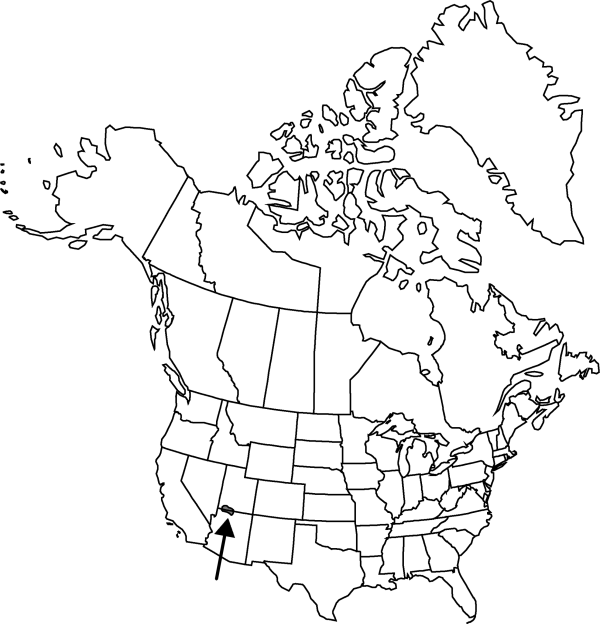Opuntia pinkavae
Rhodora 99: 223, fig. 1. 1998.
Shrubs, low, with ascending to prostrate branches, 10–25 cm. Stem segments not disarticulating, green, flattened, narrowly to broadly obovate, 6.5–15 × 3–11 cm, low tuberculate, glabrous to papillate; areoles (4–) 7–8 per diagonal row across midstem segment, subcircular, 3–3.5 mm diam.; wool white. Spines (0–) 1–3 (–4) per areole, in distal 20–50 (–70) % of areoles, porrect to reflexed, yellow-gray to whitish gray, sometimes brown in basal 1/2, straight, sometimes curved, usually flattened, slender, longest (35–) 50–70 mm. Glochids conspicuous, in broad, dense crescent at adaxial margin of areole, redbrown, to 4 mm, sides sometimes converging into columns. Flowers: inner tepals magenta throughout, 25–35 mm; filaments yellow to red-orange to magenta; anthers yellow; style white; stigma lobes green. Fruits tan, 20–30 × 18–20 mm, maturing dry, glabrous to papillate; areoles (16–) 24–34, distal areoles bearing 1–4 short spines. Seeds tan, oval to subcircular, 6.5–8 mm, warped; girdle protruding 1.5–2 mm. 2n = 88.
Phenology: Flowering late spring (May–Jun).
Habitat: Grasslands, margins of pinyon-juniper woodlands, red, sandy or limestone loam soils
Elevation: 1400-1600 m
Discussion
Opuntia pinkavae hybridizes with O. aurea. The name O. pinkavae replaces Opuntia basilaris var. woodburyi W. Earle, which was not validly published.
Selected References
None.
